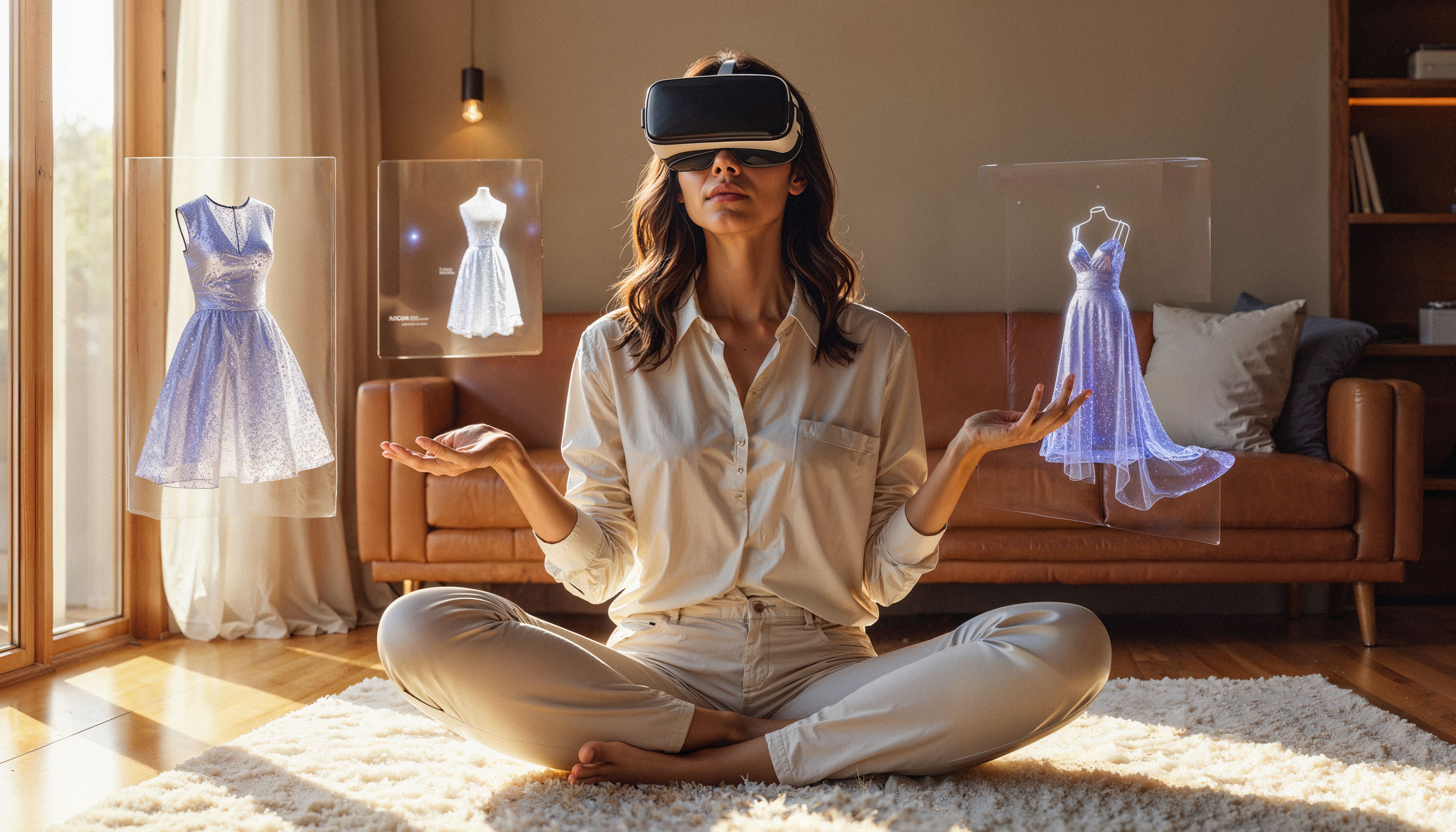AI Fashion Models From the Inside Out
Gen Z’s Digital Identity and Fashion Through AI
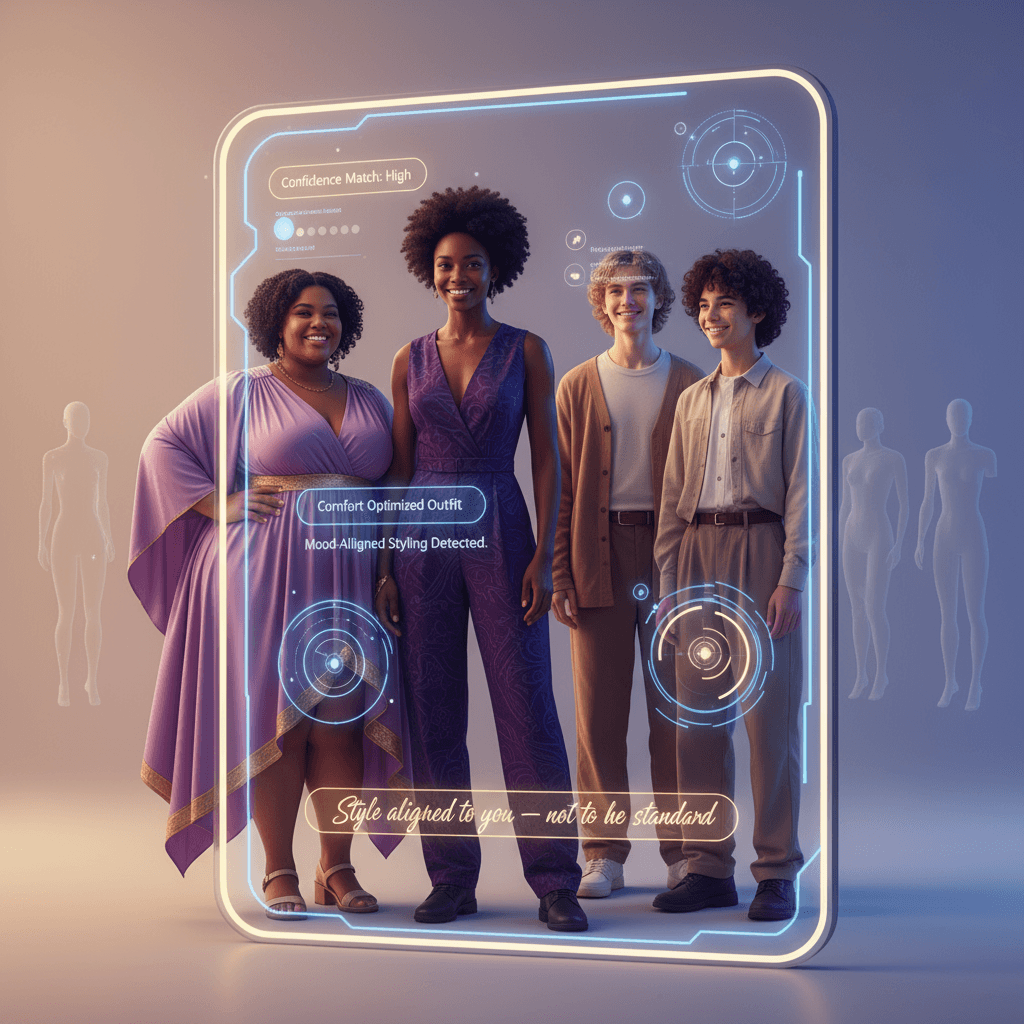

TL;DR
Gen Z uses fashion apps in ways that mirror their shifting sense of self. Their digital identity and fashion collide when AI outfit planning becomes a tool for both self-expression and affirmation. Platforms like Glance can help, but the process is layered with emotional and technological nuance.
The Mirror Test, Reinvented
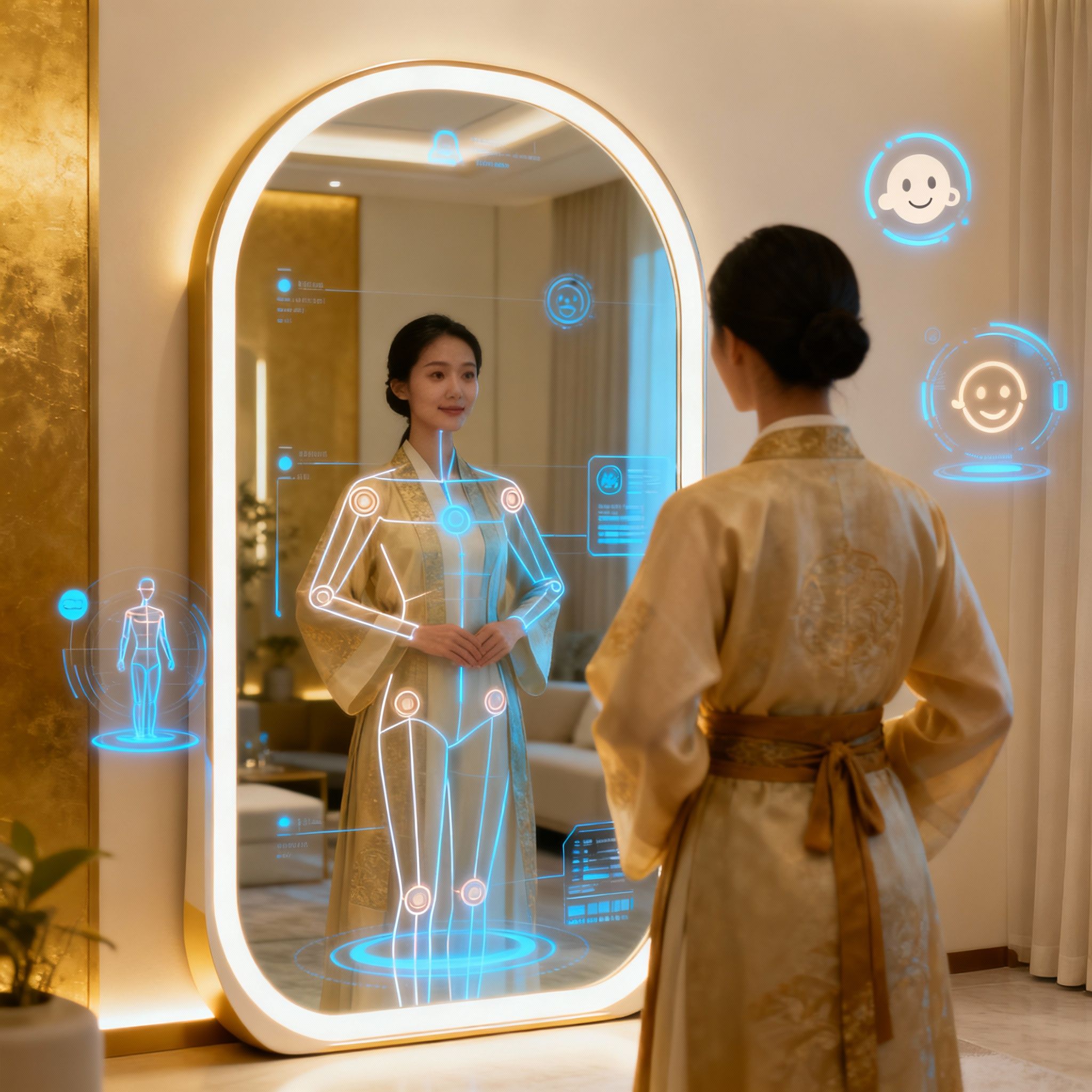
Gen Z was born into a world of screens. Their first mirrors were often digital social platforms, profile pictures, and AI-powered fashion tools. The result? A constant test of identity.
They don’t just choose clothes; they choose who they want to be. For many, fashion apps and smart tools are more than style assistants; they become mirrors for the self and an extension of their digital identity and fashion presence. This intersection of digital identity and fashion raises deep questions: Can AI outfit planning actually help Gen Z explore and affirm who they are? Or does it reinforce a curated, fractured self? And more importantly, how does repeated AI outfit planning affect the identity they project online?
Gen Z’s Digital Identity: More Than Just a Selfie
Gen Z places more importance on their online persona than older generations do. According to research, 45% of Gen Z in the U.S. say they feel more authentic online than offline.
There’s also a “double life” phenomenon: in a survey run by OnePoll for Lenovo, 46% of Gen Z Americans said they lead a different online persona than their real-life self.
Why does this matter for fashion? Because the way someone dresses in digital-first spaces or how AI suggests outfits is deeply tied to their online identity. For Gen Zers, fashion is not just about fabric it’s a way to project and experiment with their self-image. Their digital identity and fashion choices evolve together, especially as AI outfit planning becomes part of how they express or hide parts of themselves.
When AI Plans Your Outfits — Identity Gets Real
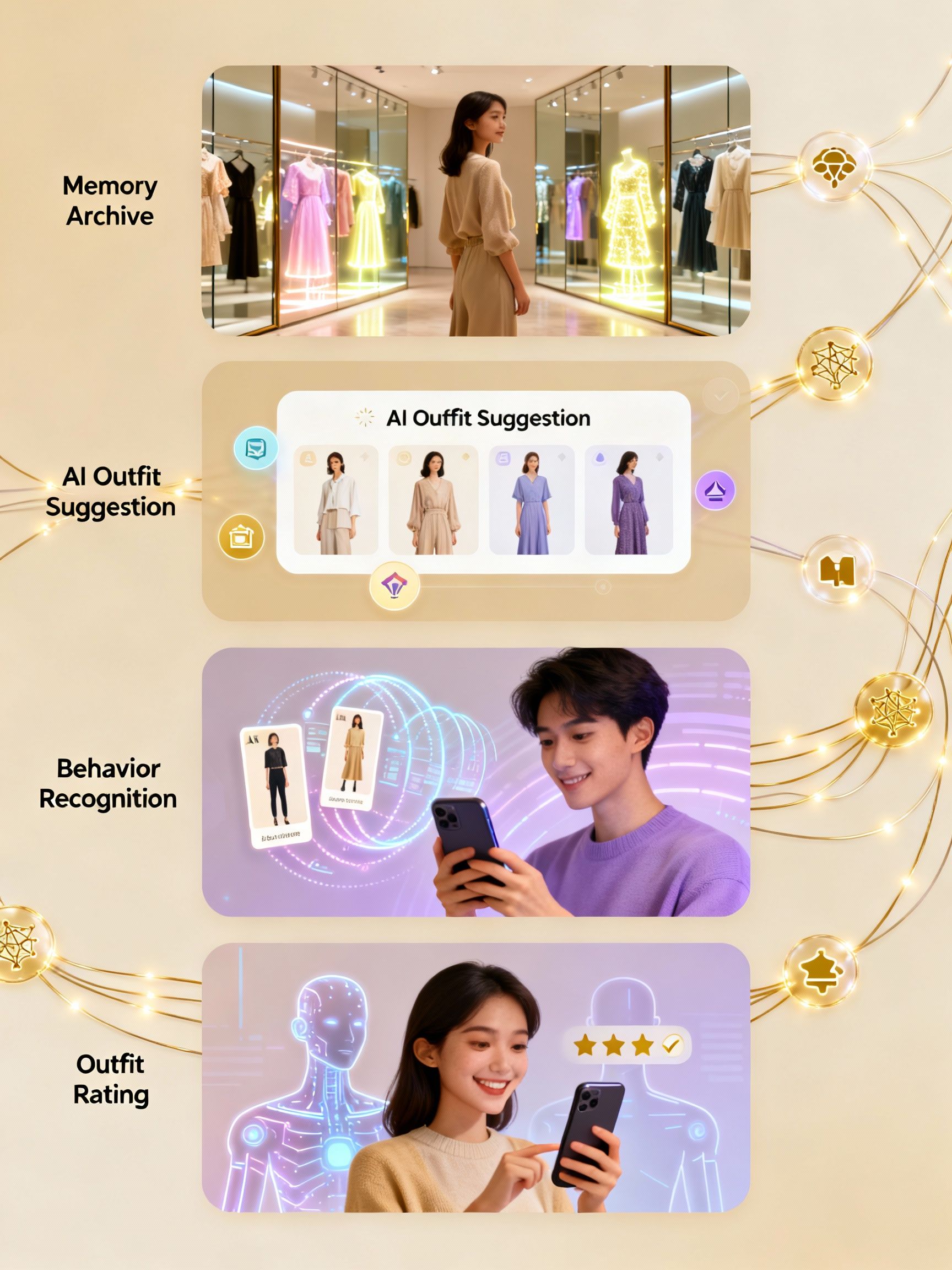
AI outfit planning is increasingly common in Gen Z shopping experiences. Luxury brands, fast fashion apps, and styling tools are all experimenting with intelligent systems that recommend looks based on behavior, past choices, and even mood. Glance is one such platform that uses behavioral patterns (swipes, dwell time, and styling cues) to offer personalized outfit suggestions.
For Gen Z, this is both liberating and challenging:
- Liberating because AI doesn’t judge, it learns. A user who scrolls through and lingers on bold, colorful styles signals something about their identity, and the algorithm may adapt.
- Challenging because AI may amplify insecurity: what happens when outfit suggestions don’t match how you feel inside, or worse, reflect a version of you that isn’t real?
This tension lies at the heart of digital identity and fashion for Gen Z.
Identity Crises Show Up in Style Choices
Some key friction points when Gen Z leans on AI fashion tools to express their identity:
- Self-Discovery vs. Self-Prediction
AI learns from past behavior but identity evolves. What you liked six months ago may not reflect who you are today, especially when your digital identity and fashion tastes shift rapidly. - The Curated Self
When AI suggests “safe” or popular styles, users may feel pigeonholed. The danger? You start dressing like an algorithm, not like you. This is where AI outfit planning can unintentionally limit growth. - Echo Chamber of Identity
If the AI only recommends what it thinks “fits” your persona, it may limit experimentation and reinforce a narrow version of your identity. - Privacy & Vulnerability
As algorithms learn more about you (style preferences, behavior), there’s emotional exposure. Glance, for example, tracks user behavior deeply that data could help you feel seen, or it could feel invasive.
The Power of Generative Tools — And Where They Fall Short
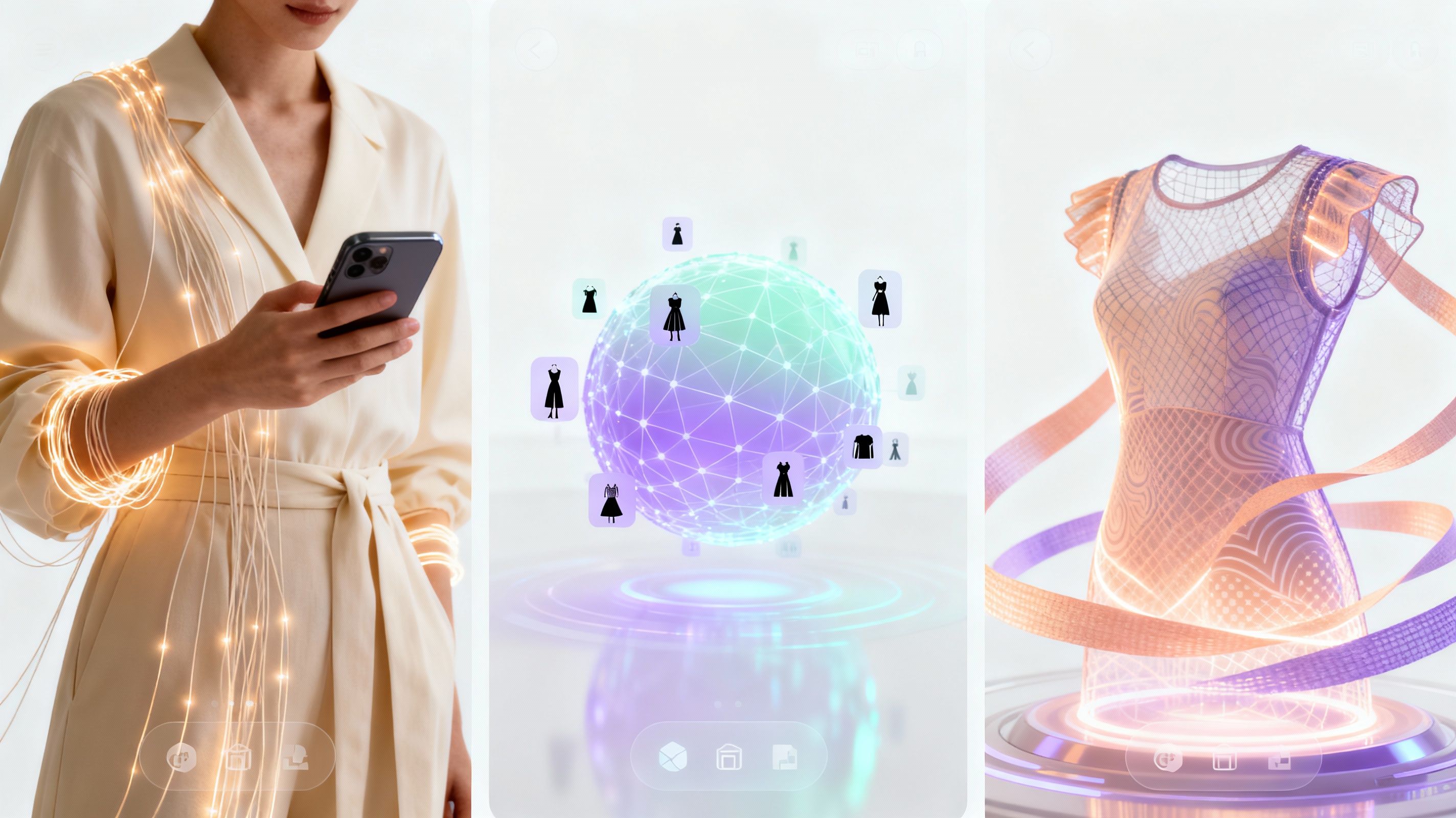
Some of the most advanced style tools now use generative ai in fashion systems that don’t just recommend pre-existing clothes, but generate outfit ideas, color combinations, and style sets based on user data.
That can be powerful:
- You can test out looks that don’t yet exist or aren’t in your wardrobe.
- Generative tools allow for truly creative self-expression building styles that match your digital identity and fashion moods.
But even here, problems persist:
- Generated outfits may still rely on biased data.
- The system might not understand why a user picked a generated piece was it because it felt like them, or because it was trendy?
- Without feedback loops, AI may never learn the emotional layers behind a person’s style.
How Glance Supports Self-Expression — With Caveats
Glance’s strength lies in blending behavior-based insights with wardrobe personalization. Here’s how it helps Gen Z navigate identity + style:
- Real-time style coaching: As you scroll, Glance sees what you linger on and suggests outfits that resonate with your current mood or identity. Over time, this improves your digital identity and fashion consistency.
- Identity-aware discovery: Glance doesn’t just push trends it surfaces items that reflect how you’ve shopped, not just what’s popular.
- Learning over time: With continued use, Glance refines its understanding of your style identity, which can help during identity shifts or self-discovery phases.
Still, no algorithm is perfect: for identity crises, AI should be a tool, not a mirror. Your true self isn’t always something to be “optimized” through digital identity and fashion cues.
Navigating Identity Crises Through Fashion + AI
So, how can Gen Z use AI-powered fashion tools like Glance to explore and affirm identity without losing themselves?
- Treat AI as a co-creator, not a dictator
Use suggestions as inspiration, not prescriptions. Try out AI’s outfit ideas, but don’t feel bound by them. This keeps AI outfit planning healthy and exploratory. - Give feedback
If an outfit feels “off,” reject it thoughtfully. Over time, that feedback helps the AI learn what really reflects you. - Experiment with generated styles
Use generative outfit tools to explore identities you’re curious about without the pressure of commitment. - Be mindful of data trust
Understand what data the app is tracking (Glance tracks behavior) and decide how much you want to let your digital identity shape your style through AI outfit planning. - Balance online and offline personas
Fashion is part of your self-expression, but it’s not all of it. Use AI for style, but don’t let it define you or overshadow your digital identity and fashion choices offline.
The Broader Implications — Identity, Tech & Fashion Collide
The role of digital identity and fashion extends beyond aesthetics it touches mental health, belonging, and self-acceptance:
- For many Gen Zers, fashion apps are a space to try out identities in a low-risk digital world.
- The rise of AI outfit planning reflects a broader shift: people using tech to negotiate who they are, not just what they wear.
- As AI becomes more creative (via generative models), the gap between digital identity and real-world identity might shrink or become more complex.
Conclusion: Beyond the Mirror, Into the Self
Gen Z isn’t just asking, “What should I wear?” They’re asking, “Who am I and who do I want to be?” In a world where clothes and algorithms meet, digital identity and fashion become intertwined.
Smart tools like Glance can help navigate this terrain suggesting, inspiring, and reflecting evolving identities. But ultimately, the power remains in Gen Z’s hands. AI is a companion, not a reflection. And real identity isn’t found in code; it's lived in exploration, creativity, and the freedom to redefine oneself.
FAQs
Q1: What is “digital identity and fashion”?
It means using fashion and AI to explore, express, and reflect one’s identity online not just picking clothes, but shaping how you present yourself digitally.
Q2: How does AI outfit planning help Gen Z with identity?
By analyzing past choices, behavioral cues, and style preferences, AI can suggest outfits that align with how you see yourself, not just what’s trendy.
Q3: Is it safe to trust AI with personal style data?
It can be but trust depends on the platform. Apps like Glance track behavioral signals; it’s wise to review their privacy policy and give feedback when suggestions feel wrong.
Q4: What’s the difference between regular fashion apps and generative AI in fashion?
Generative AI doesn’t just pick existing clothes it can create outfit combinations or styled sets, giving users more creative, identity-driven options.
Q5: Can AI help me explore different versions of myself?
Yes. Use AI tools as experimentation: try on new styles digitally, explore different moods, and see how suggested looks align with how you feel and refine the system as you go.




